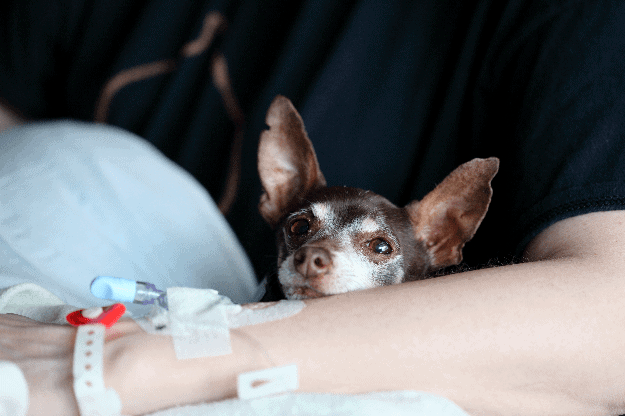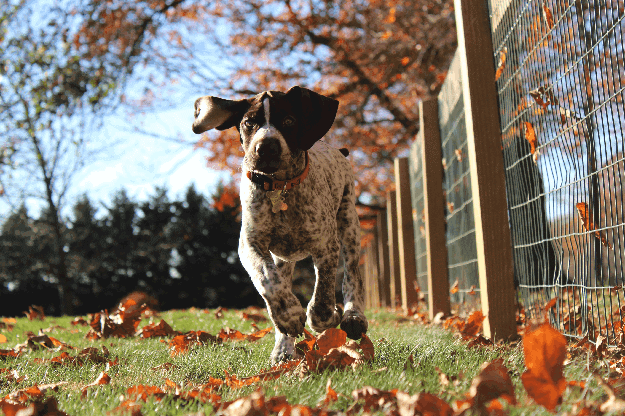Painting your interior walls is a cost-effective way to give your home a new look and feel, but it could also cause major problems for your pet. Paint contains harmful toxins that can affect the health of humans and animals. Your pets can smell paint, especially dogs. Because they are driven by their sense of smell, wanting to get close to a paint can is expected.
Pets and paint are not a good combination. They should not be near paint due to the health risks associated with inhaling the paint fumes or accidentally swallowing paint. There’s always the added concern of the mess your pet can make by touching the walls or knocking over the paint can.
Having healthy indoor air quality is vital when painting is involved. Can these paint fumes seriously affect your pets? Yes, they can. That’s why it’s important to understand the different dangers of paint exposure when it comes to your pets.
How Does Paint Affect Pets?

Paint contains toxic chemicals called volatile organic compounds (VOCs), which are known carcinogens. They are released into the air as the paint dries. Lead paint is also harmful to animals. These chemicals emit toxic gasses, which can affect pets in adverse ways such as:
- Irritation to skin, eyes, and respiratory system
- Dizziness or loss of coordination
- Tremors
- Upset stomach
- Loss of coordination
- Difficulty breathing
- Vomiting
- Diarrhea
- Hair loss
- Lung inflammation and infection
Signs of exposure to lead paint include:
- Lethargy
- Depression
- Difficulty walking
Other dangerous products like varnishes and paint removers are harmful to pets too. Even after the painting is finished, it’s best to keep your pets out of harm's way until the strong odor is nearly eliminated. Keep an eye on your pets. If they become unwell or come down with any of the symptoms mentioned, contact your vet immediately.
Types of Paints to Avoid
Always check the ingredients of the paint before you purchase. Problematic paints for your pets include those containing polyurethane, formaldehyde, ammonia, acetone, fungicides, and biocides, all of which are toxic.
Most paints are not branded as being a pet-safe paint; however, by looking at the ingredients, you can make a better decision on which paint to use. Pet owners should choose paint products labeled “No VOC” or low VOC. Also, look for paints that are non-toxic and free from heavy metals. It is also important to do your research because paints that claim to have a VOC-free base might still use a VOC pigment.
Sherwin-Williams Harmony paints are good pet-safe products. They do not contain any VOCs. This brand also improves indoor air quality and inhibits the growth of mold and mildew. That’s why Walla Painting only uses Sherwin Williams paints.
What You Can Do to Keep Your Pets Safe

There are a few ways to keep your pets safe during a paint job. To avoid potential harm to your pets, some solutions include:
- Secure your pets in another room or area of the home far from where the painting project is taking place. Don’t forget to keep their food, water, toys, bedding and litter box in the secure space.
- Board your pets at a local kennel if the painting project will take a while.
- Take your pet to an animal daycare for shorter paint projects.
- Ask a family member or friend to watch your pets until the completion of your project.
- If weather permits, put your pets in the backyard with plenty of water, food, shade.
- After your paint project is complete, keep your pets out of the area for 24 to 48 hours to make sure your walls are dry.
- Keep the windows open and fans blowing. Good airflow will help the paint dry faster and improve indoor air quality.
- Make sure your pets do not wander into the work area during the painting. Your work area should be secured. Keep all paint products and supplies out of reach.
- If you’re painting small items like a table or chair, try painting that outside. The fumes will go into the air and paint won’t enter the home.
Conclusion
If you are not sure which paint to use or how to properly protect your pet, consult with a professional like Walla Painting. We only use low-VOC paints and we even offer paints that are zero VOC. In most cases, unless your pets are super-sensitive, they are safe to remain in the house as long as they are not in the same area as where the painting is being performed.
We’re currently offering 15% off labor for your fall painting projects. Contact us today for details and a free consultation.

Comments are closed.